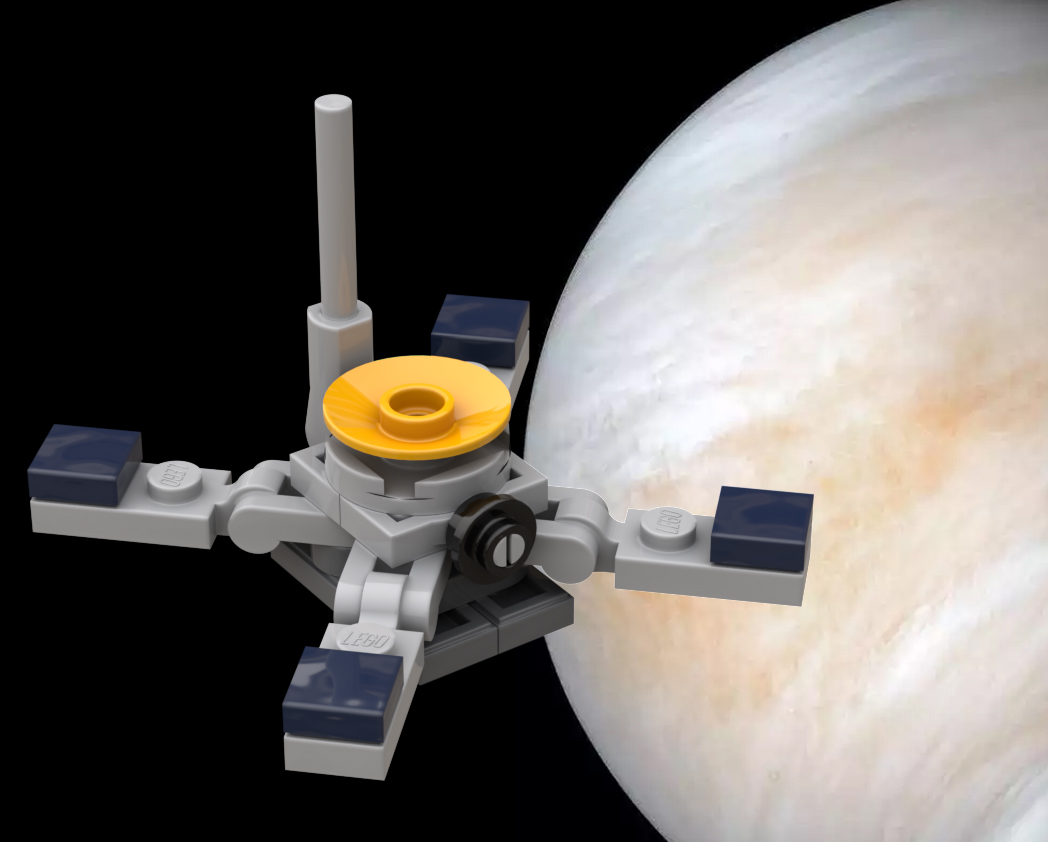
LEGO Designer:
Dan Fallon (phreaddee)
Designed: July 2021
Categories:
All,
Probes and Satellites,
Space Agency - NASA,
Venus
Mariner 5 (Mariner Venus 1967) was a spacecraft of the Mariner program that carried a complement of experiments to probe Venus’ atmosphere by radio occultation, measure the hydrogen Lyman-alpha (hard ultraviolet) spectrum, and sample the solar particles and magnetic field fluctuations above the planet. Its goals were to measure interplanetary and Venusian magnetic fields, charged particles, plasma, radio refractivity and UV emissions of the Venusian atmosphere.
Mariner 5 was actually built as a backup to Mariner 4, but after the success of the Mariner 4 mission, it was modified for the Venus mission by removing the TV camera, reversing and reducing the four solar panels, and adding extra thermal insulation.
Liftoff took place on June 14, 1967 from Cape Canaveral Air Force Station Launch Complex 12 on Atlas vehicle 5401. Booster performance was normal through the Atlas portion of the launch and the first Agena burn, with all systems operating at the proper level. During the second Agena burn, abnormal fluctuations in the engine chamber pressure occurred, however they did not preclude successful interplanetary injection. There had been several occurrences of this behavior on previous NASA and Air Force launches and a program was initiated to correct it which led to a redesign of the Agena turbopump gearbox. Mariner 5 flew by Venus on October 19 that year at an altitude of 3,990 kilometers (2,480 mi). With more sensitive instruments than its predecessor Mariner 2, Mariner 5 was able to shed new light on the hot, cloud-covered planet and on conditions in interplanetary space.
Radio occultation data from Mariner 5 helped to understand the temperature and pressure data returned by the Venera 4 lander, which arrived at Venus shortly before it. The Venera 4 and Mariner 5 data was subsequently analysed together under a combined Soviet–American working group of COSPAR in 1969, an organisation of early space cooperation. With the data of these missions, it was clear that Venus had a very hot surface and an atmosphere even denser than expected.
The operations of Mariner 5 ended in November 1967 and it is now defunct in a heliocentric orbit.
Further Information and References
Designer Notes
Part count: 23 bricks, 12 lots.
| Unit | width | length | height |
|---|---|---|---|
| Studs | 6.7 | 6.7 | 5.3 |
| Inches | 2.1 | 2.1 | 1.7 |
| Centimetres | 5.3 | 5.3 | 4.2 |
Related Posts
None found